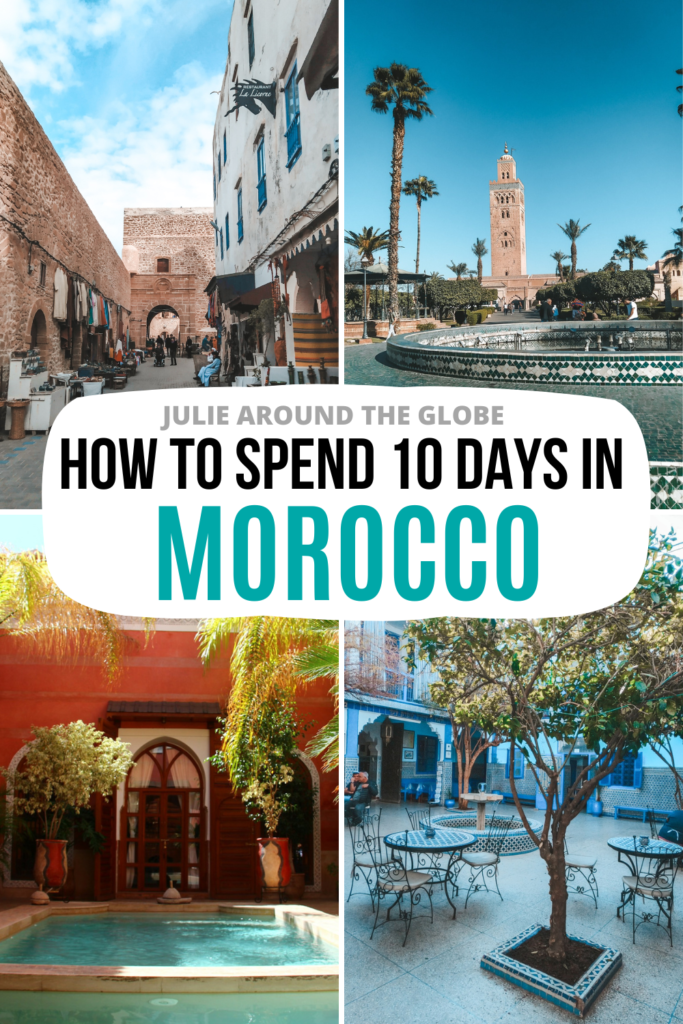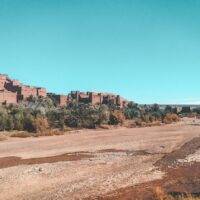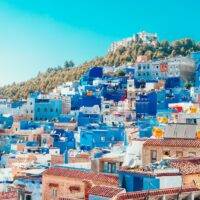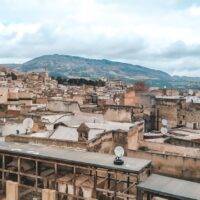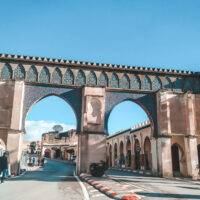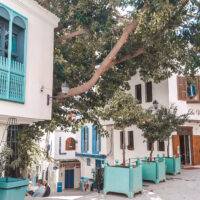10 Days in Morocco: An Itinerary from Marrakesh to the Sahara and Beyond
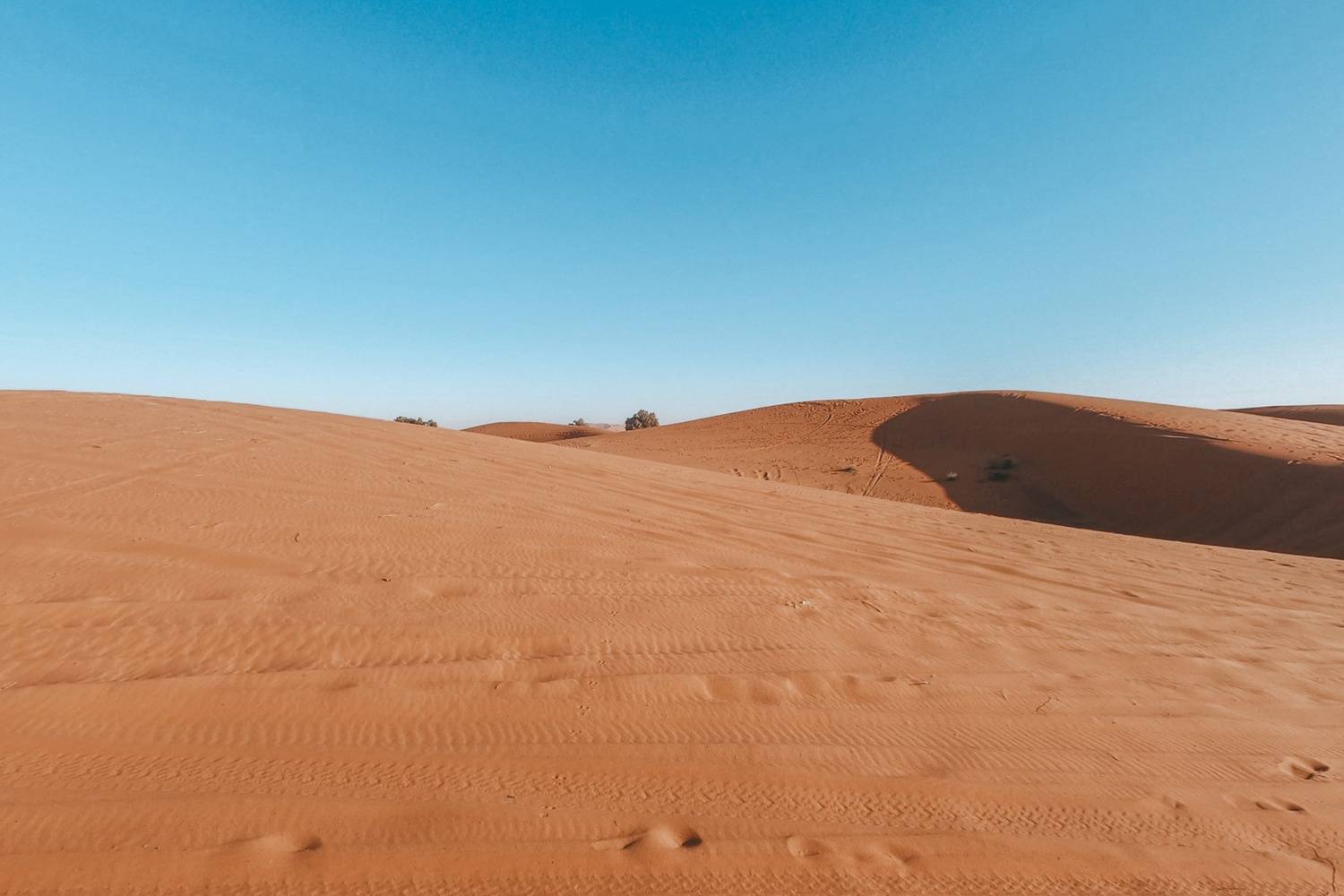
Disclaimer: This post may contain affiliate links, which means that if you click on any of those links and make a purchase, I’ll get a small commission, at no cost to you, to help support this website.
With just 10 days, you can see some of the best Morocco has to offer — from the vibrant streets of Marrakesh to the peaceful dunes of the Sahara, the coastal charm of Essaouira, the historic cities of Fes and Meknes, and the blue-hued beauty of Chefchaouen. It’s a fast-paced itinerary, but a rewarding one, packed with cultural sites, natural landscapes, and unforgettable experiences.
This route works best if you have your own car or book a tour covering the desert portion. While public transportation can get you to many places, it won’t work for all stops if you’re short on time. If you’re up for the road trip, here’s how to make the most of 10 days in Morocco:
- Day 1–2: Explore Marrakesh.
- Day 3: Day trip to the coastal town of Essaouira.
- Day 4: Visit Ait Ben Haddou and Ouarzazate via the scenic High Atlas Mountains.
- Day 5: Journey through the Dadès and Todra Gorges, overnight in Merzouga.
- Day 6: Experience the Sahara — camel ride, sand dunes, and overnight in a desert camp.
- Day 7: Long drive to Fes.
- Day 8: Discover Fes’ medina, tanneries, and cultural sites.
- Day 9: Day trip to the blue city of Chefchaouen.
- Day 10: Return to Marrakesh via Rabat and Casablanca.
Days 1 & 2 – Discovering the Best of Marrakesh
Kick off your Moroccan adventure in the vibrant, chaotic, and utterly captivating city of Marrakesh. With two days here, you’ll have time to explore the rich layers of history, architecture, and culture—plus get a taste of the city’s incredible food scene.

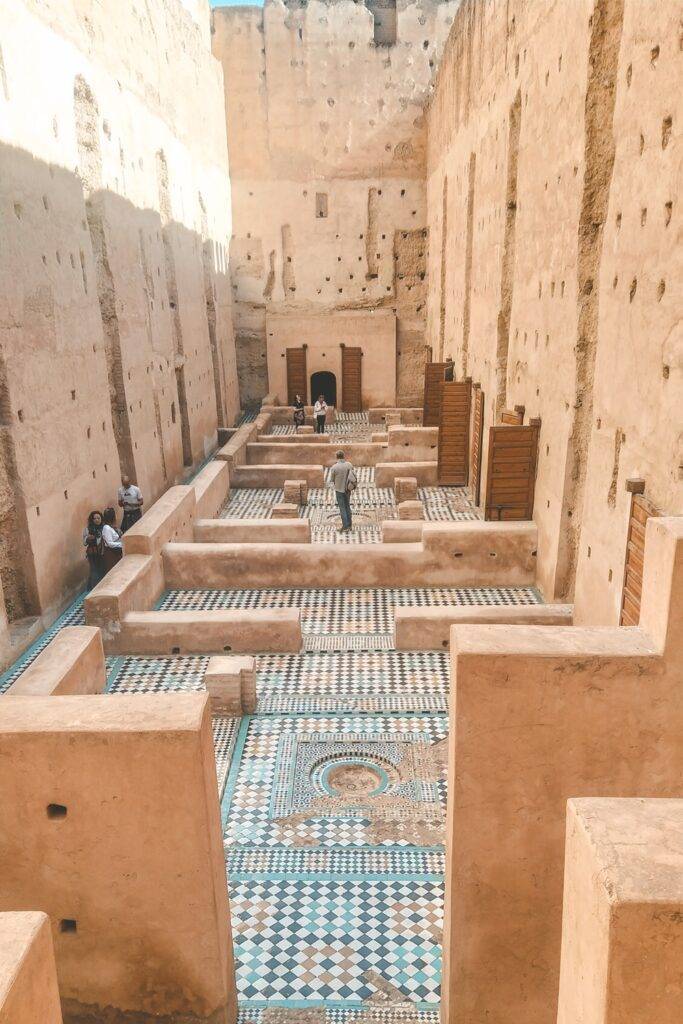
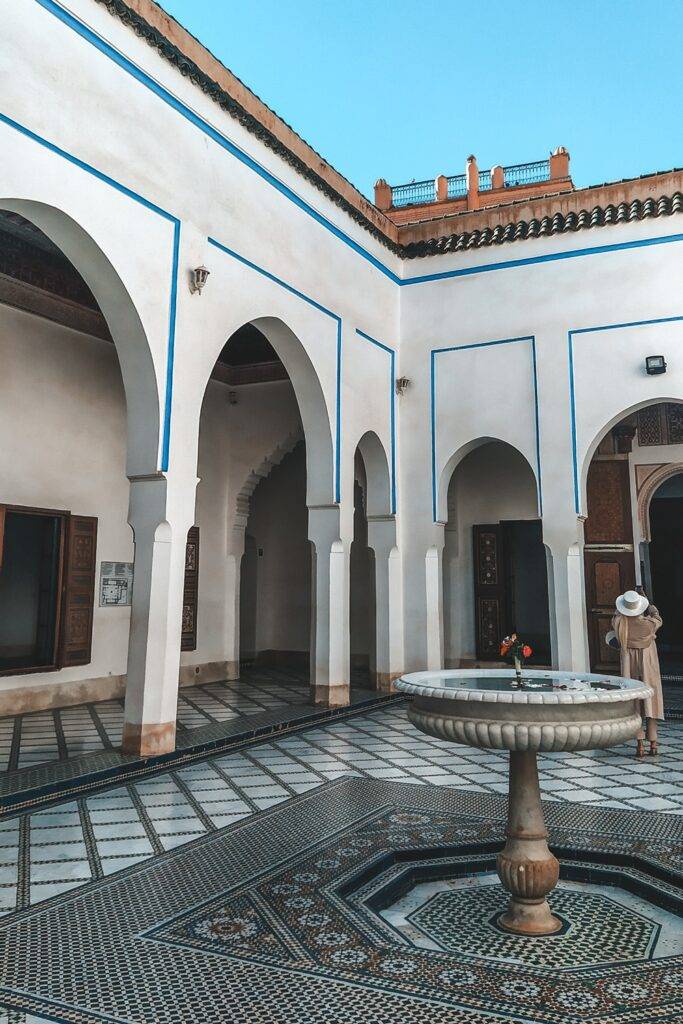
Day 1: History, Culture & the Medina
Start your day by diving straight into Marrakesh’s historical gems:
- Saadian Tombs – Tucked behind the Kasbah Mosque, these beautifully decorated tombs are a quiet window into Marrakesh’s past. (opens at 9 AM)
- El Badi Palace – Now in ruins, this once-glorious palace still impresses with its scale and sun-drenched courtyards.
- Bahia Palace – A must-see for its intricate tilework, carved ceilings, and peaceful gardens.
- Dar Si Said Museum – Housed in a lovely palace, this museum is dedicated to Moroccan arts, particularly woodwork and Berber crafts.
On your way into the medina, pass by the Koutoubia Mosque, whose 12th-century minaret dominates the skyline, and stroll across Jemaa el-Fnaa, the main square where snake charmers and orange juice vendors keep things buzzing.
For lunch, head to Nomad, a stylish rooftop restaurant with modern Moroccan dishes and a great view over the souks.
In the afternoon, wander deep into the medina:
- Souks of Marrakesh – You could spend days here. Highlights include Souk Semmarine (textiles and lanterns), Souk el Attarine (spices), and Souk Haddadine (metalwork).
- Almoravid Koubba – A rare surviving piece of Almoravid architecture from the 12th century.
- Ben Youssef Madrasa – One of my favorite spots in the city, this former Islamic college stuns with its zellij tilework and tranquil symmetry.
Wrap up the day with a guided food tour, where you’ll get to try everything from snail soup to traditional mechoui lamb and learn the ins and outs of Moroccan culinary culture.
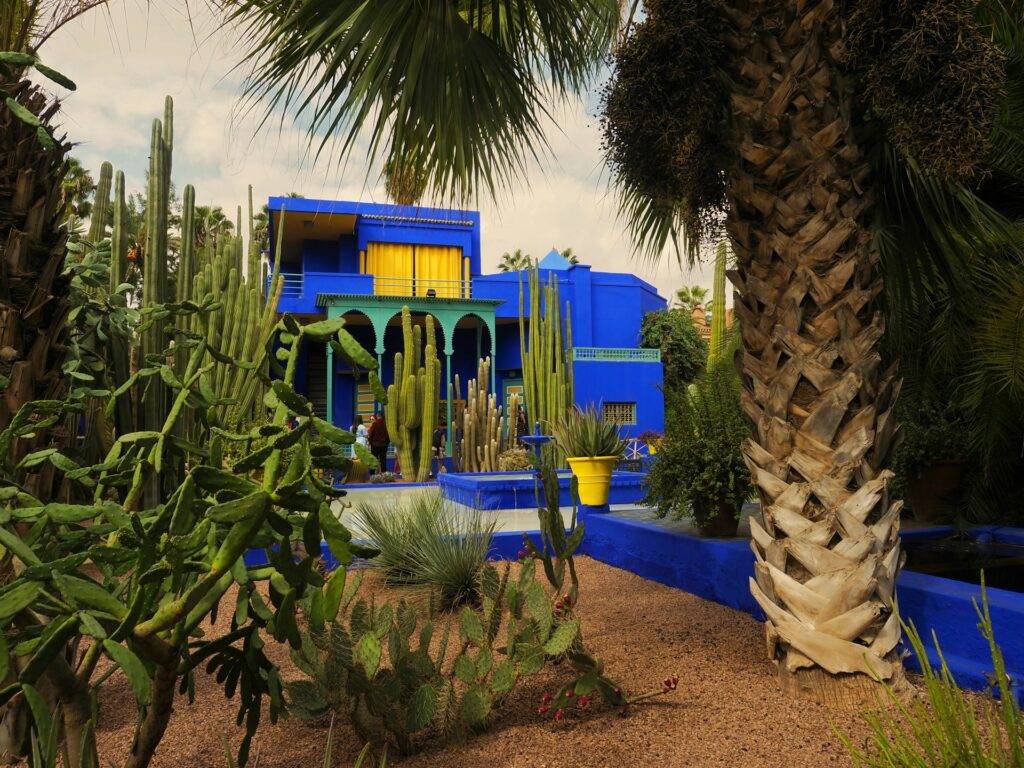
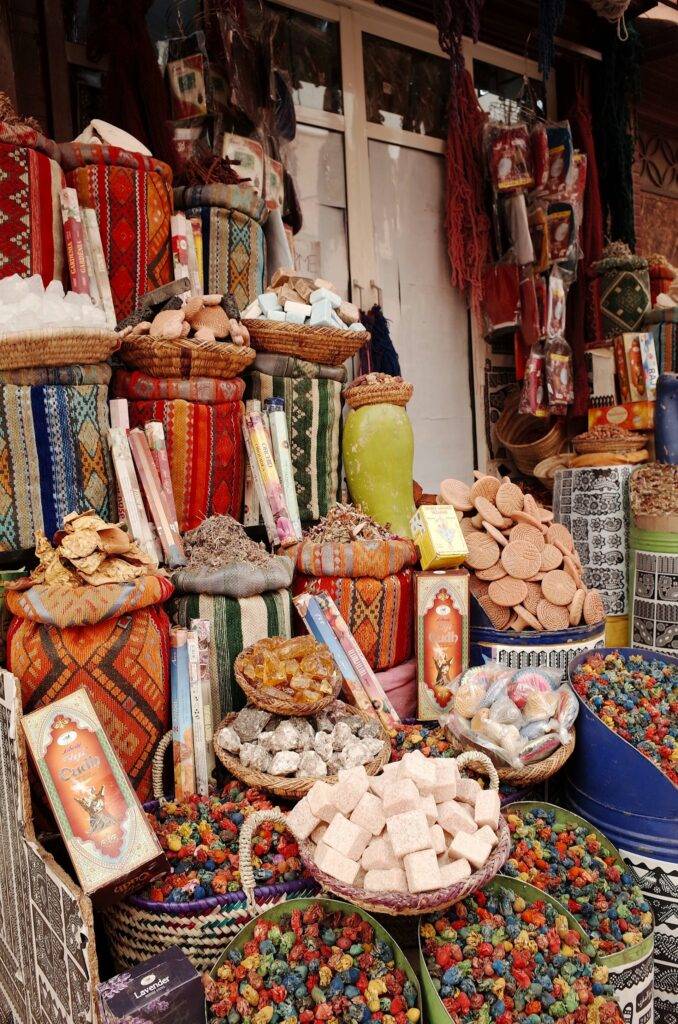
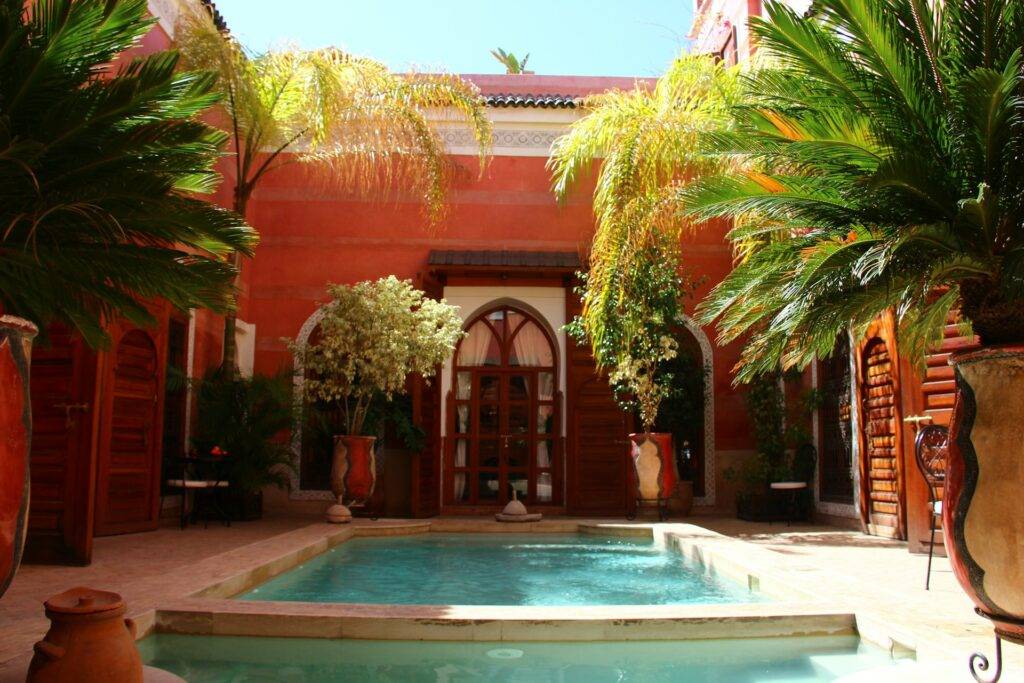
Day 2 – Sunrise Hot Air Balloon, Culture, Relaxation & Rooftop Dining
Early Morning – Hot Air Balloon Ride
Kick off your day before dawn with a hot air balloon ride over the Marrakesh countryside. Most companies (like Ciel d’Afrique or Marrakech by Air) offer hotel pick-up around 5–6 AM. You’ll glide above Berber villages and the Atlas foothills as the sun rises—an unforgettable experience. Breakfast is typically included after landing.
Midday – Dar El Bacha & Bacha Coffee
After returning and freshening up, head to the Dar El Bacha Museum of Confluences, one of Marrakesh’s finest restored palaces, filled with Moroccan craftsmanship and global art pieces. Don’t skip Bacha Coffee next door—try a rich brew and pastry in the stunning, historic setting.
Early Afternoon – Jardin Majorelle & Yves Saint Laurent Museum
Next, head to Jardin Majorelle, the iconic cobalt-blue garden oasis created by French painter Jacques Majorelle and later owned by Yves Saint Laurent. After wandering the lush paths, the YSL Museum next door offers a beautifully curated look at the designer’s legacy.
Late Afternoon – Hammam & Spa
After a full day of sightseeing, unwind with a traditional Moroccan hammam experience. Les Bains de Marrakech, located near the Royal Palace, is a long-standing favorite for visitors. The setting is serene, with candlelit halls, warm stone slabs, and private treatment rooms.
A typical visit includes a black soap scrub, a steam bath, and a relaxing massage—perfect for recharging before dinner. It’s best to book your appointment in advance, especially during peak travel months.
Evening – Rooftop Dinner with a View
End the day with dinner at Le Jardin, a tranquil oasis tucked away in the heart of the medina. Set in a leafy courtyard and surrounded by lush greenery and Moorish decor, it offers a calm contrast to the bustle outside. The menu features Moroccan classics with a creative twist, and the rooftop seating is ideal in the warmer months. It’s a lovely spot to slow down and soak in the ambiance of Marrakesh at night.
Day 3 – Day Trip to Essaouira
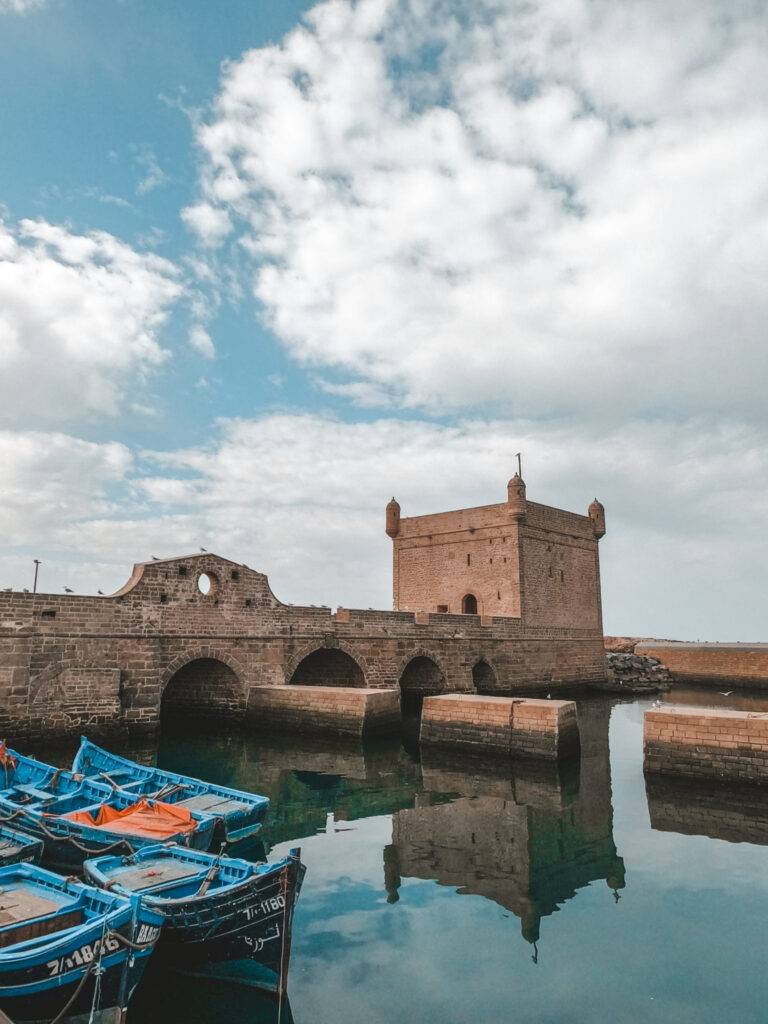
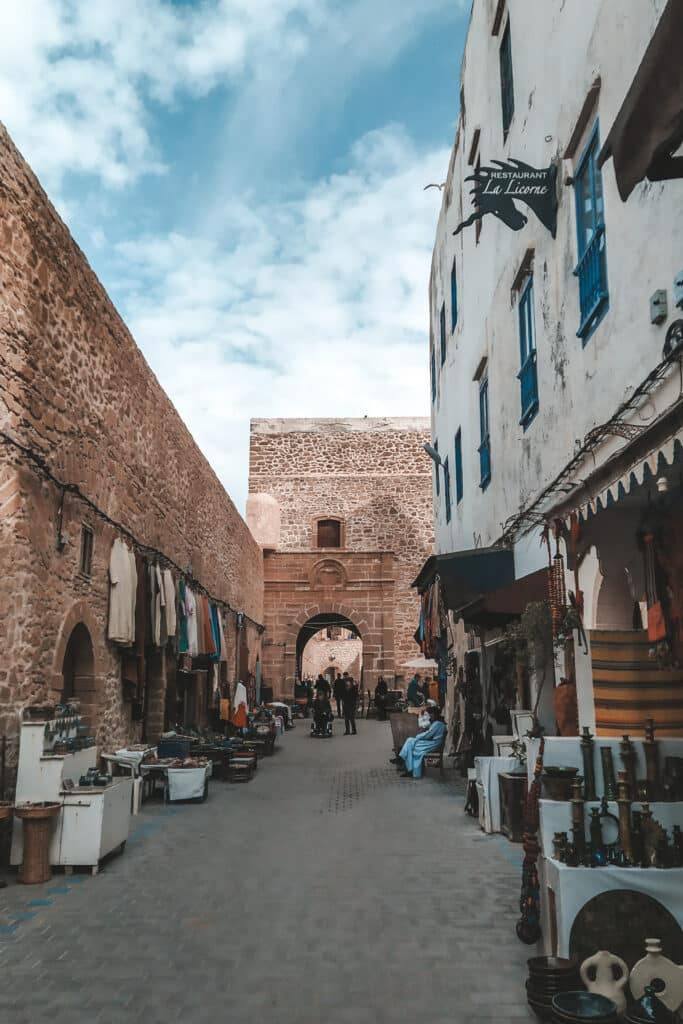
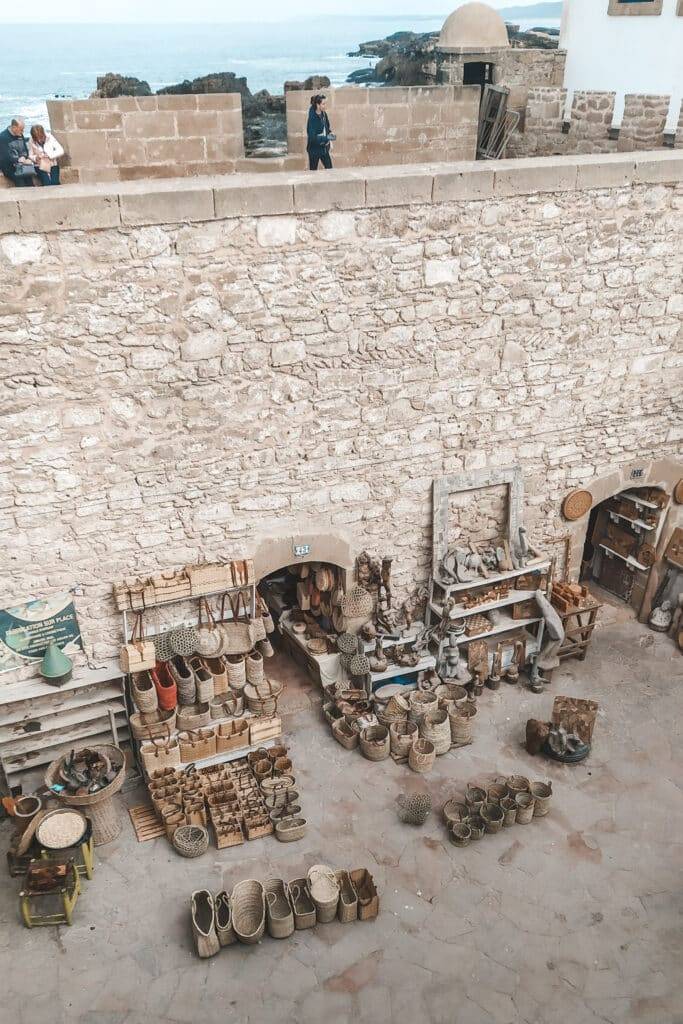
After two whirlwind days in Marrakesh, a day trip to the coastal town of Essaouira is the perfect change of pace. With its Atlantic breeze, whitewashed medina, and relaxed vibe, Essaouira feels worlds away from the heat and hustle of Marrakesh.
Getting There
The easiest and most budget-friendly way to get to Essaouira is by Supratours or CTM bus. Both companies operate multiple daily departures from Marrakesh (3 to 3.5 hours one way). Tickets can be purchased in advance online or at the station.
- From Marrakesh: Depart early, ideally around 8:00 AM.
- Return from Essaouira: The last buses back are usually around 6:00–7:00 PM.
- If you’re traveling in high season or over the weekend, book your tickets a day ahead to secure your seat.
Alternatively, private transfers or small-group tours are available, but it’s totally doable on your own.
What to Do in Essaouira
Once in town, it’s easy to explore everything on foot:
- Wander the Medina – Smaller and calmer than Marrakesh’s, Essaouira’s medina is UNESCO-listed and filled with indie art galleries, jewelry shops, and breezy courtyards.
- Explore the Ramparts – Head to the Skala de la Kasbah and Skala du Port for sea views, old cannons, and scenes straight out of a movie (literally—Essaouira was a Game of Thrones filming location).
- Stroll the Port – Watch blue boats bobbing in the harbor and try freshly grilled fish from one of the casual seafood stalls.
- Relax by the Beach – Windy but beautiful, the beach is ideal for a walk or simply sitting with a mint tea and watching the kite surfers.
Where to Eat
For lunch with a view, head to The Hungry Nomad, a rooftop spot with solid food and a laid-back atmosphere. Or grab something casual by the port—choose your fish and have it grilled on the spot.
After a relaxed afternoon, make your way back to Marrakesh in time for dinner or a quiet evening at your riad.
Day 4 – Aït Ben Haddou & Ouarzazate
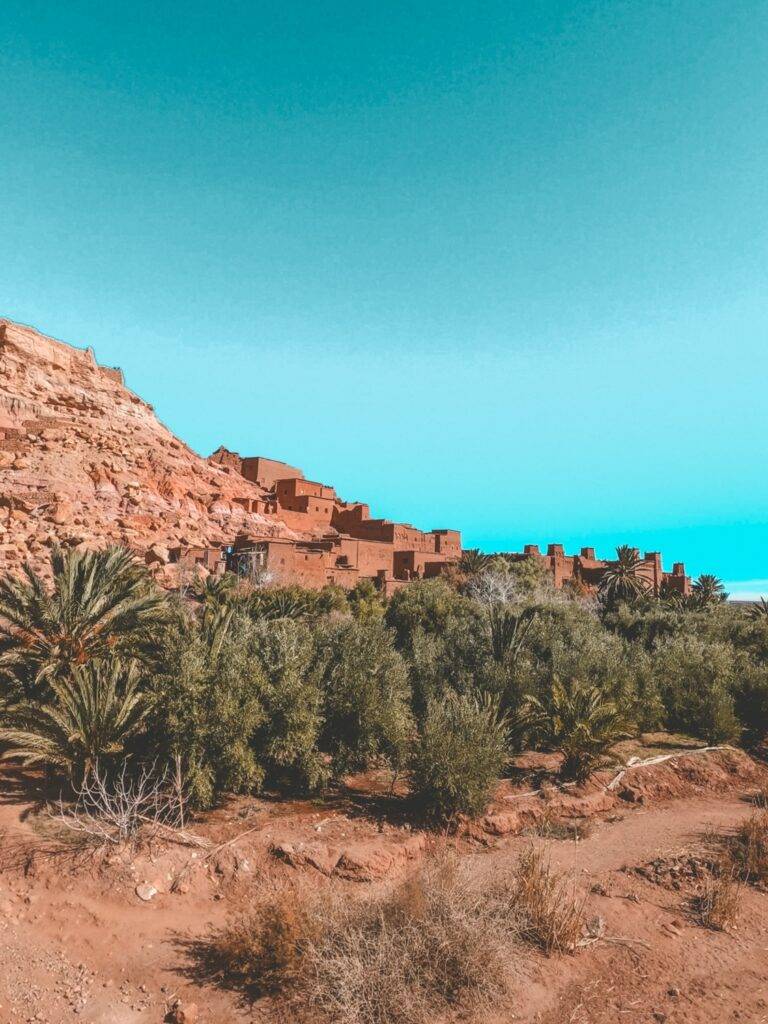


Leave Marrakesh early in the morning to begin your journey through the High Atlas Mountains. The drive takes you along the scenic Tizi n’Tichka Pass, with winding roads, mountain villages, and stunning panoramic views all the way to Aït Ben Haddou—a UNESCO-listed ksar that feels like a step back in time. Wander through the clay-brick alleyways, climb to the top for sweeping views of the valley, and soak in the atmosphere that made this a filming location for Gladiator, Game of Thrones, and more.
Afterward, continue to Ouarzazate, often dubbed the “Hollywood of Morocco.” Visit the impressive Kasbah Taourirt, a maze-like fortress that once housed the powerful Glaoui family, and if time allows, stop by Atlas Studios to see some of the sets used in famous films. It’s a long travel day, but the landscapes and history make it one of the most memorable.
In Ourzazate, Restaurant Douyria is a great spot for a relaxed dinner. The setting is warm and traditional, and the food — especially the lamb tagine — is delicious. It’s popular with both locals and travelers for good reason.
For a comfortable night, Le Berbère Palace is a solid option. It has spacious rooms, a big pool, and a quiet, relaxed vibe that’s perfect after a day on the road.
Logistics Tip: If you’re planning to visit Aït Ben Haddou, Ouarzazate, the Dades and Todra Gorges, and reach the Sahara before continuing to Fes, it’s highly recommended to either rent a car or book a guided multi-day tour. While public transportation does exist, it’s slow, requires multiple transfers, and wouldn’t realistically fit within this 10-day itinerary.
Day 5: Dades Valley, Todgha Gorge & Arrival in Merzouga


Today is a journey through some of the most spectacular landscapes in Morocco, as you make your way from Ouarzazate to Merzouga, with scenic stops in the Dades Valley and Todgha Gorge.
Morning: Dades Valley
Depart Ouarzazate early and head towards the Dades Valley, known for its dramatic red cliffs, winding roads, and striking rock formations like the “Monkey Fingers.” You’ll pass traditional Berber villages and can stop to admire panoramic views from the Tissadrine road.
Take a short walk through the valley to soak in the atmosphere and see how locals live. I did the Monkey Fingers Canyon Loop, and although it’s a bit challenging, I loved the scenery.
Midday: Todgha Gorge
Continue east to the Todgha Gorge, a narrow canyon with towering 300-meter limestone cliffs. It’s a popular spot for rock climbers, but even just walking along the base of the gorge is awe-inspiring. You can grab a simple lunch here at one of the small cafes with views of the cliffs, or bring snacks for the road.
Afternoon/Evening: Drive to Merzouga
After exploring the gorge, drive to Merzouga, the gateway to the Sahara. The landscape begins to flatten and dry out as you approach the golden sand dunes of Erg Chebbi. You’ll likely arrive around sunset, in time to check into your hotel or riad at the edge of the desert.
Where to Stay: Stay in a hotel or guesthouse near the dunes tonight (you’ll head into the desert camp tomorrow). Many places offer desert views and camel or 4×4 excursions.
Day 6 – Exploring the Sahara & Overnight in the Desert
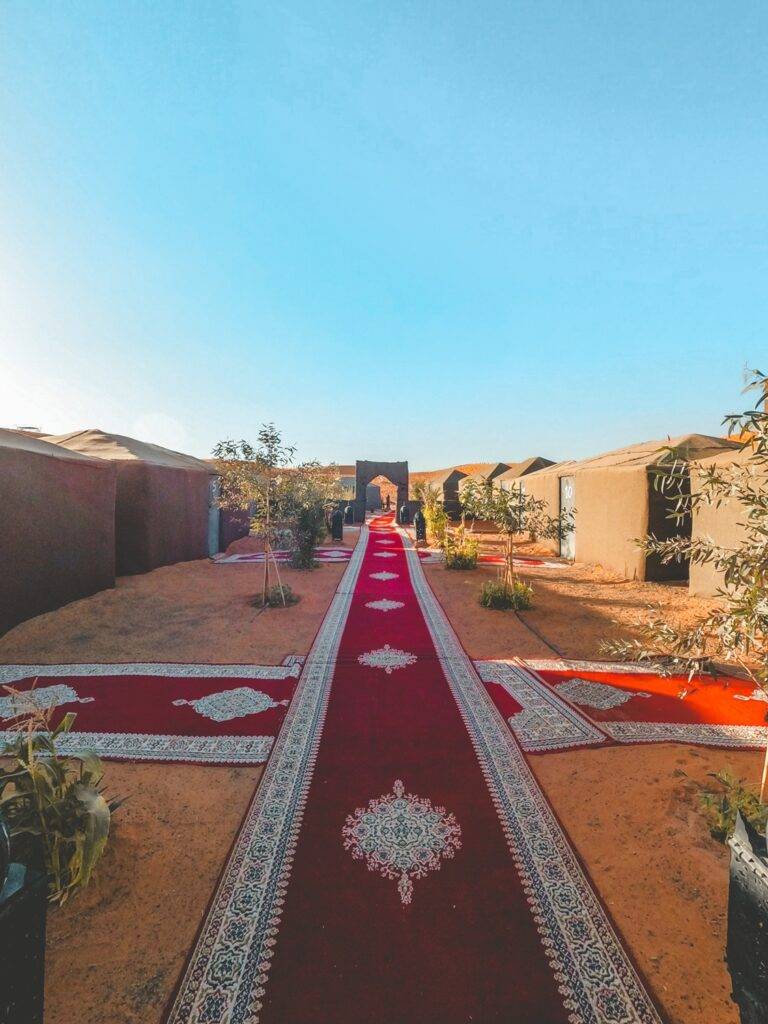

Waking up in Merzouga feels like you’ve arrived on the edge of the world — endless dunes, golden light, and a calm that’s hard to describe. Spend the morning soaking it all in. You can explore the surrounding villages, visit the seasonal Lake Dayet Srij, where flamingos sometimes gather, or learn about the local Gnaoua culture in Khamlia, a small village known for its music.
By mid-afternoon, it’s time to head into the dunes. Most desert camps will organize a camel trek or 4×4 ride to take you deep into the Erg Chebbi dunes. The journey itself is half the experience — slow, rhythmic, and strangely peaceful. Watching the sun set over the sand is one of those moments you won’t forget anytime soon.
Your camp will usually provide dinner, music by the fire, and the kind of silence that makes you want to stay up late just listening to the desert. If you’re visiting during a new moon, the starry sky is unbelievable.
What to Expect: Camps vary a lot — some are basic and rustic, others more luxurious with en-suite bathrooms and proper beds. Whichever you choose, make sure to pack warm layers; desert nights can get very cold, especially in winter.
Booking Tip: You can book desert camps online in advance, but many also work with local guesthouses in Merzouga. If you’re on a tour, this will likely be included. If you’re traveling independently, it’s worth reading reviews carefully to know what level of comfort to expect.
Day 7 – Merzouga to Fes: A Long Scenic Drive
Today is a travel-heavy day, so start early. The journey from Merzouga to Fes takes around 7 hours, not including breaks — but it’s a scenic one, taking you through shifting landscapes, mountain passes, and small Berber villages.
You’ll drive north through Erfoud and Errachidia, then climb into the Middle Atlas Mountains, passing cedar forests and maybe even spotting wild Barbary macaques near Azrou. Stop in Midelt for lunch or a quick coffee break — it’s a good halfway point and a chance to stretch your legs.
You’ll arrive in Fes by late afternoon or early evening. It’s a big shift from the calm of the desert to the buzz of the medina, but it’s worth it.
Where to Stay in Fes: Choose a riad in the medina — places like Riad Laaroussa or Riad Mazar Fes offer a calm retreat while keeping you close to the city’s heart (both have a car park).
Dinner Recommendation: If you’re not too tired, The Ruined Garden is a great spot for a relaxed meal in a lovely courtyard setting.
Day 8 – Exploring Fes

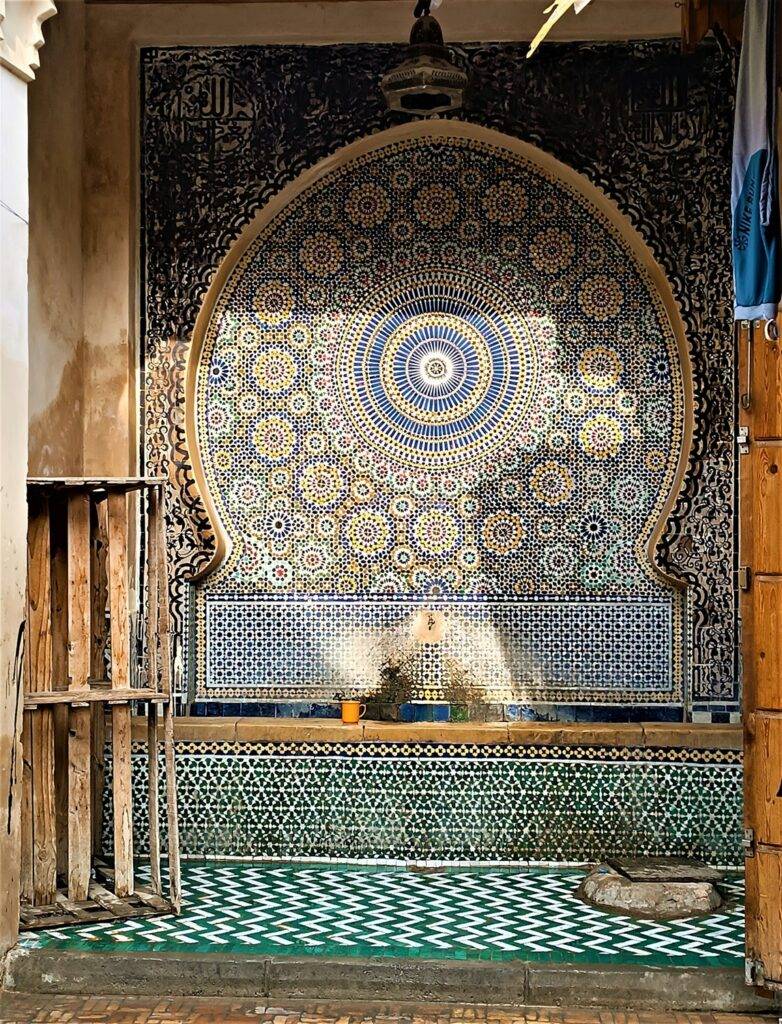
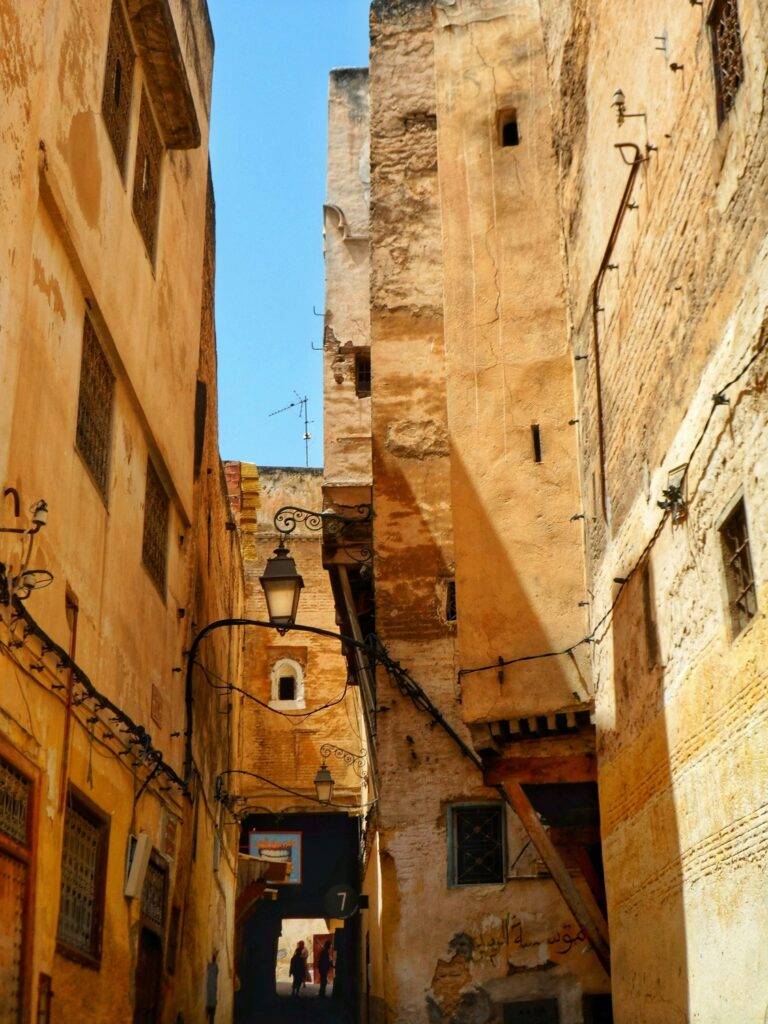
After the long drive the day before, today is all about diving into the culture, history, and sensory overload that is Fes el-Bali, the city’s oldest and most iconic neighborhood. It’s easy to get lost in the maze of alleys — and honestly, that’s part of the charm.
Start your morning at the Bou Inania Madrasa, a stunning example of Marinid architecture with intricate woodwork and zellij tilework. From there, wander toward the Chouara Tannery, where you can catch a panoramic view of the dye pits — yes, the smell is strong, but most shops will hand you a sprig of mint to make it easier.
Spend the rest of the morning browsing the medina’s souks. Fes is known for its leather goods, traditional ceramics, and handwoven textiles. It feels a bit less chaotic than Marrakesh, and there’s some seriously beautiful craftsmanship here.
For lunch, stop at Cafe Clock, a relaxed spot tucked into a riad, known for its camel burger (if you’re feeling adventurous) and its beautiful rooftop.
In the afternoon, head to the Al-Qarawiyyin Mosque and University — considered the oldest university in the world. Non-Muslims can’t go inside, but you can get a glimpse through the doors or from rooftops nearby. Then, continue to the Dar Batha Museum, which houses a collection of traditional Moroccan arts.
Wrap up the day with a sunset stroll up to the Merenid Tombs just outside the medina. The views over the old city are stunning, especially as the call to prayer echoes across the rooftops.
If you’re up for it, book a traditional hammam in the evening or unwind over dinner at Restaurant Palais Fes Yahya, a beautiful restaurant with a seasonal Moroccan menu and a beautiful terrace.
Day 9 – Day Trip to Chefchaouen


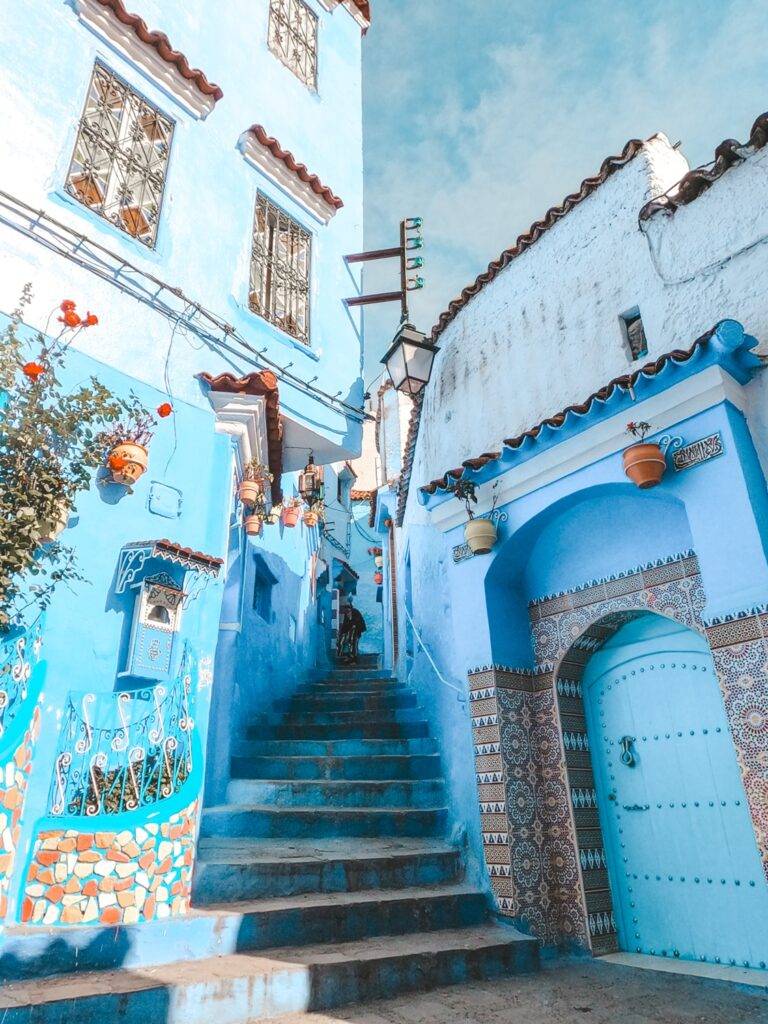
It’s an early start today, but it’s worth it — you’re heading to Chefchaouen, the famous Blue City tucked into the Rif Mountains. The drive from Fes takes around 3.5 hours each way, so plan accordingly and consider booking a tour if you haven’t rented a car.
Once you arrive, take your time wandering through the medina’s maze of blue-washed alleys, where every corner feels made for a photo. The pace is slower here than in Fes or Marrakesh — it’s more about soaking in the atmosphere than ticking off a list of sights.
Don’t miss Ras El Maa, a natural spring just outside the medina walls where locals come to cool off. Nearby, the Kasbah Museum and Plaza Uta el-Hammam offer a glimpse into the town’s history and make a great spot for lunch or a mint tea break. If you’re up for a short uphill walk, head to the Spanish Mosque for panoramic views over the blue town.
By late afternoon, start making your way back to Fes. It’s a long day, but Chefchaouen’s charm — and color palette — makes it one of Morocco’s most memorable stops.
Day 10 – Drive Back to Marrakesh via Rabat and Casablanca

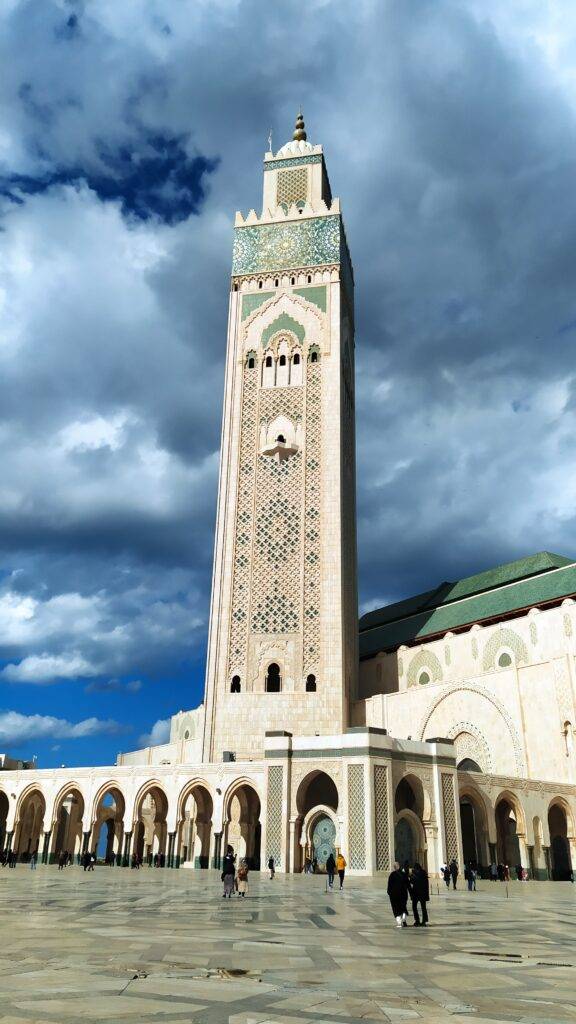
This Moroccan journey wraps up with a long drive back to Marrakesh, but there’s still time for a few final highlights along the way. It’s a big day (about 6–7 hours of driving total), so start early and pace your stops.
First up is Rabat, Morocco’s capital. Even a short visit gives you a taste of its laid-back elegance. Stretch your legs with a walk around the Kasbah of the Udayas, then head over to the Hassan Tower and the Mausoleum of Mohammed V — both striking architectural landmarks and easy to visit quickly.
From Rabat, continue to Casablanca (about 1.5 hours). If you’ve got time for one thing, make it the Hassan II Mosque, one of the largest and most beautiful mosques in the world. It’s one of the few in Morocco open to non-Muslim visitors, so if the timing lines up, consider a guided tour. You could also stop for dinner at Rick’s Café, the movie-themed restaurant set in a restored mansion near the coast.
From there, it’s around 2.5–3 hours to Marrakesh. Expect to arrive in the evening — tired, probably, but full of memories from a trip that’s taken you across cities, mountains, and dunes.
Save it on Pinterest for later:
